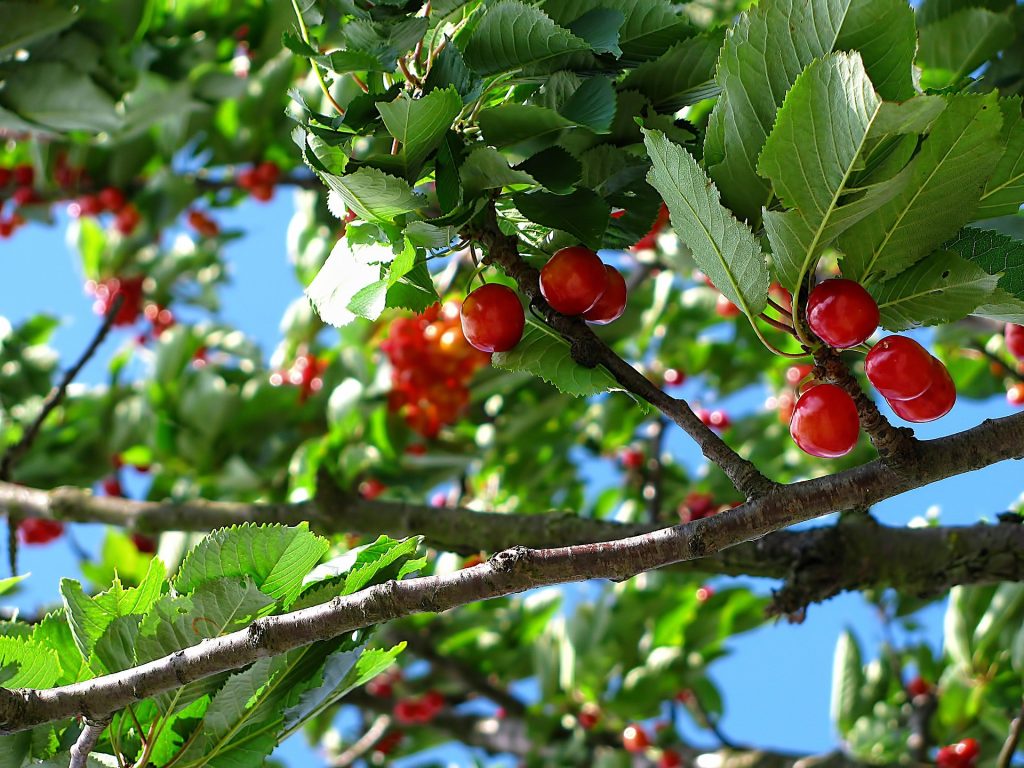Growing Cherries
Cherries are closely related to apricots, plums, nectarines and peaches, which are collectively known as drupes, or more commonly known as stone fruit. They belong to the Prunus genus of the rose family. Only a few members of the genus have edible fruit, the best known being the sweet cherry (Prunus avium) and the sour cherry (Prunus cerasus). Of these two, there are hundreds of varieties.
Production is greatly influenced by rainfall – drought affects yield, size and timing and rain at harvest causes splitting.
Growing cherries
Cherries do best in sheltered areas with light rainfall. They grow on most soil types as long as the soil is friable and well drained. They don’t like having wet feet, so slightly sloping country with deep, well-structured topsoil is ideal. A winter chill is required for a good crop.

Cherry varieties cross easily, so buds from a healthy, productive tree are often grafted to a rootstock selected for a good growing habit. Care should be made to plant cross-fertile varieties, and those with similar flowering times together to assist pollination.
Management includes pruning (summer pruning is thought to be the most beneficial), weed control and timely fertilising and watering.
Trees can grow to 12 m and with good management, they’ll be around for a while. They begin to produce significant crops from about 6 years and can continue to produce fruit for around 100 years.
Problems
Cherries are prone to a number of pests and diseases. In our region (Southern Tablelands), bacterial canker is the most serious problem, particularly in colder and wetter areas. They are also susceptible to viral diseases and insect pests, and have their own slug (cherry slug) and aphid (cherry aphid). Information on dealing with these pests is available from NSW Agriculture.
As they are one of the first fruits to appear in spring, cherries are regular targets for birds, particularly in early maturing varieties. Netting is considered the best form of control.
Harvesting
Cherries trees produce white or pink flowers in spring. Depending on location, cherries are ready for harvest around 6-8 weeks later. Cherries are generally picked by hand, with the stems attached to prolong shelf life.
Peak season for cherries in our part of the world is early-mid summer. Cherries don’t ripen after harvest, so they need to be picked very close to maturity, and are therefore don’t travel well and are highly perishable.
